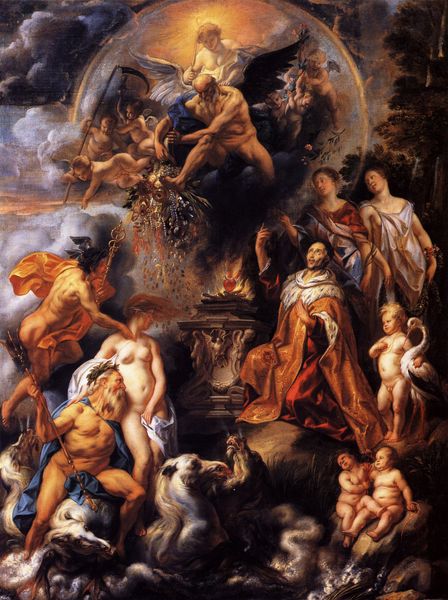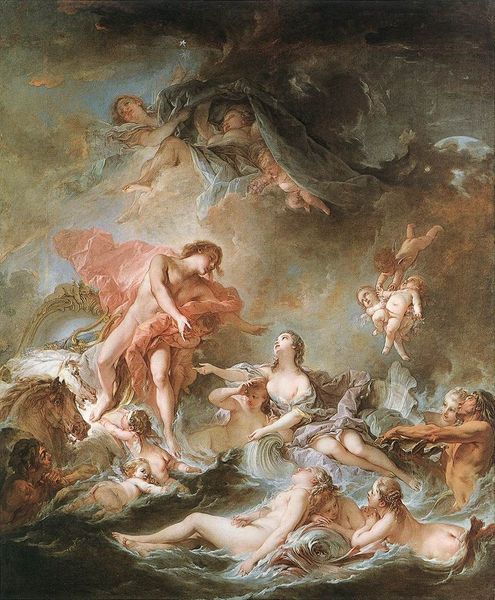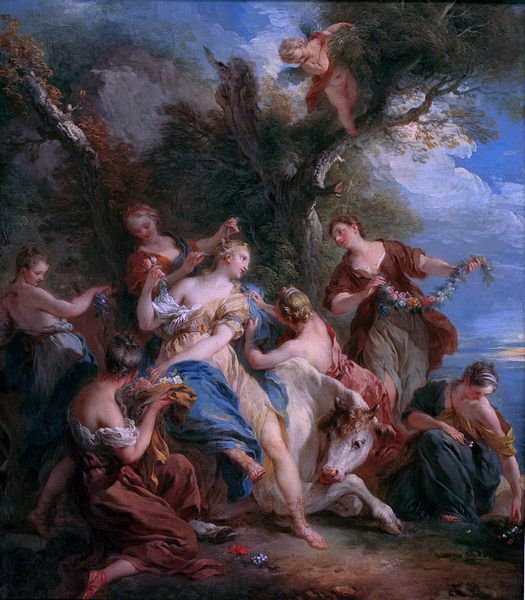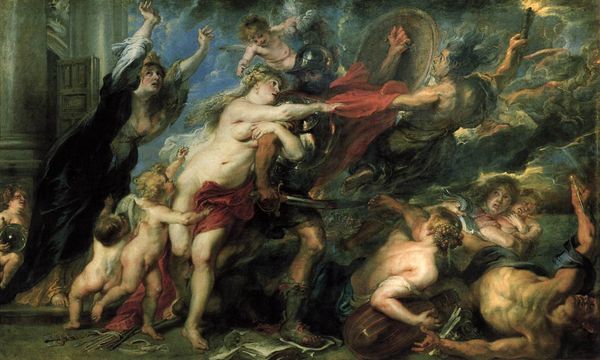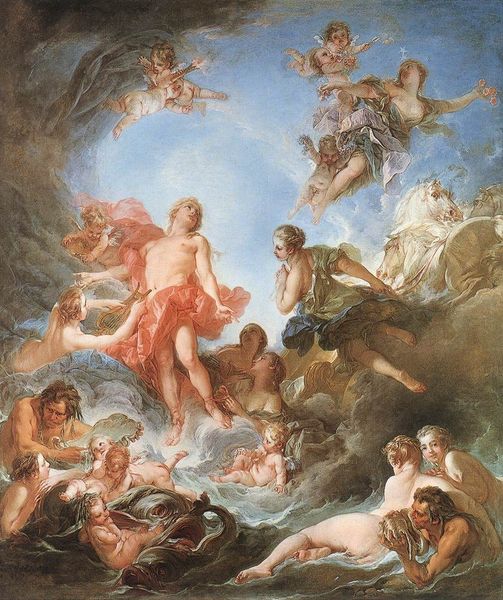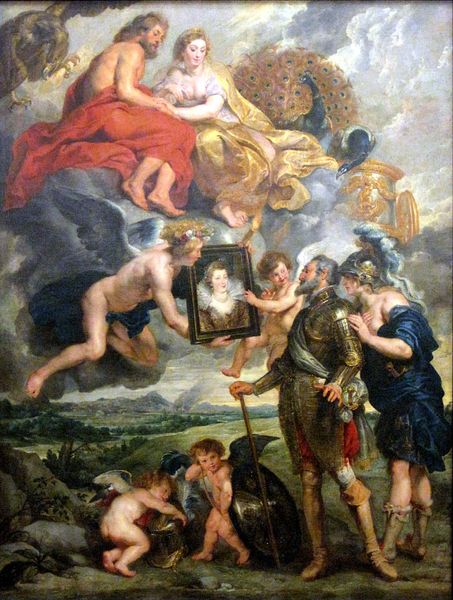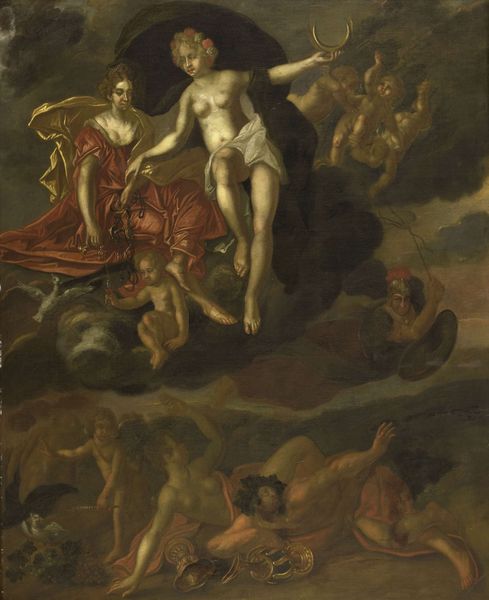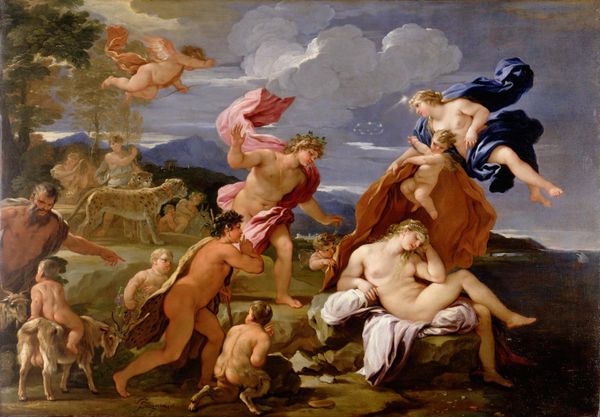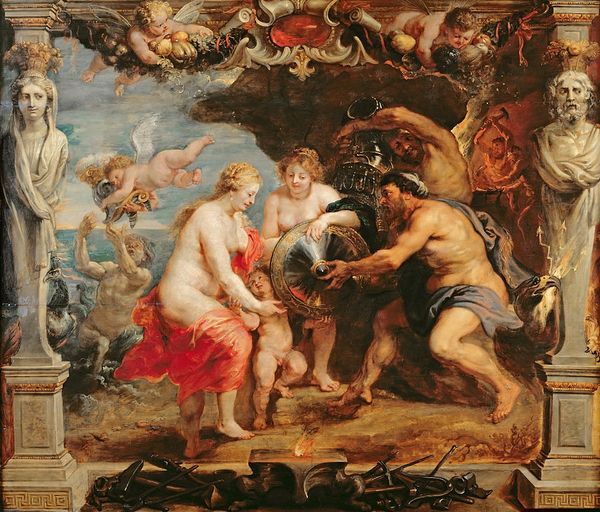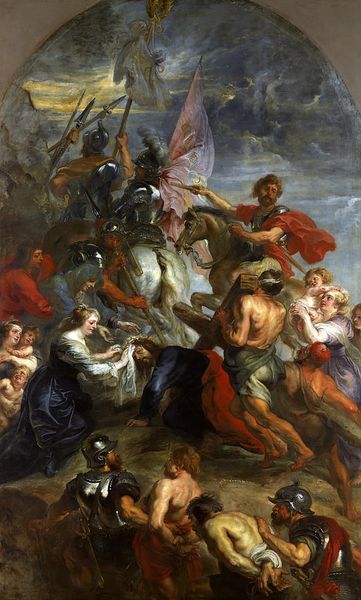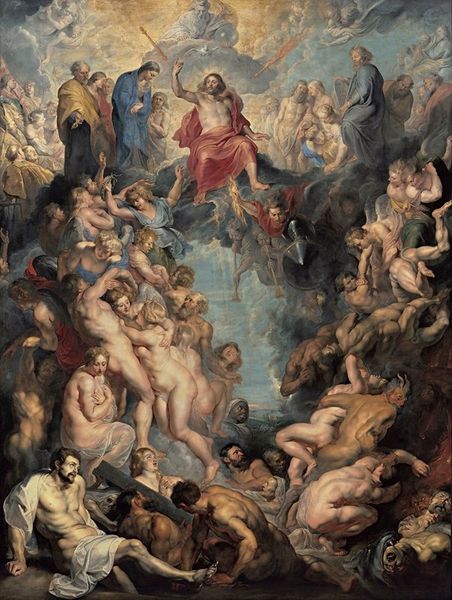
oil-paint
#
portrait
#
allegory
#
baroque
#
oil-paint
#
figuration
#
oil painting
#
mythology
#
history-painting
Dimensions: 394 x 295 cm
Copyright: Public domain
Curator: Here we see Peter Paul Rubens's depiction of the meeting of Marie de' Medici and Henry IV at Lyons, painted around 1625. What are your initial thoughts? Editor: It strikes me as overtly theatrical, almost bombastic in its use of allegory. All that swirling fabric and the grand entrance – the opulence of it all! The scale of the canvas, and the sheer labor involved in its creation, are equally overwhelming. Curator: Indeed. Consider the context: Rubens, commissioned by Marie herself, crafts this scene as pure propaganda, a deliberate fabrication meant to solidify her power. We see their union portrayed not as a marriage of convenience, but as divinely ordained, dripping with allegorical meaning. Jupiter and Juno oversee the couple. Editor: Exactly! But beyond the symbolic gestures, what materials did he have at his disposal? Where were these pigments sourced, who ground them, and how does that all feed into a cycle of patronage and production? The gold leaf alone on that chariot is staggering. Curator: That's fascinating. And it leads us back to Marie de' Medici. She not only paid for this elaborate display of her legitimacy, but the image also presents a highly constructed and idealised version of her influence, glossing over a period riddled with political intrigue and marginalisation for many. The composition centers a female gaze on historical making. Editor: Don’t overlook how Rubens and his workshop would’ve executed this massive work, breaking it down into sections, each possibly delegated to different hands, further contributing to a manufacturing system which he and his patrons oversaw! Curator: It's clear how the subject—the power and the politics of royalty—connects directly to how that power was displayed, but also how the labour system that brought it to fruition contributes to that same political power. Rubens makes a clear attempt to fuse earthly authority with celestial approval, an early form of image manipulation, no? Editor: Absolutely! And by analyzing the materials themselves, from the canvas weave to the binding agents, we gain a deeper understanding of the entire network required to manifest this spectacle on such a grand scale. Every dab of paint has a purpose that supports a specific agenda! Curator: Examining it through this intersectional lens really reveals how interwoven questions of gender, class and representation were during the period. How power was literally manufactured and distributed through art. Thank you, that was incisive. Editor: The pleasure was all mine. Analyzing the 'how' as much as the 'why' really enriches my experience of viewing and analyzing this artwork.
Comments
No comments
Be the first to comment and join the conversation on the ultimate creative platform.
